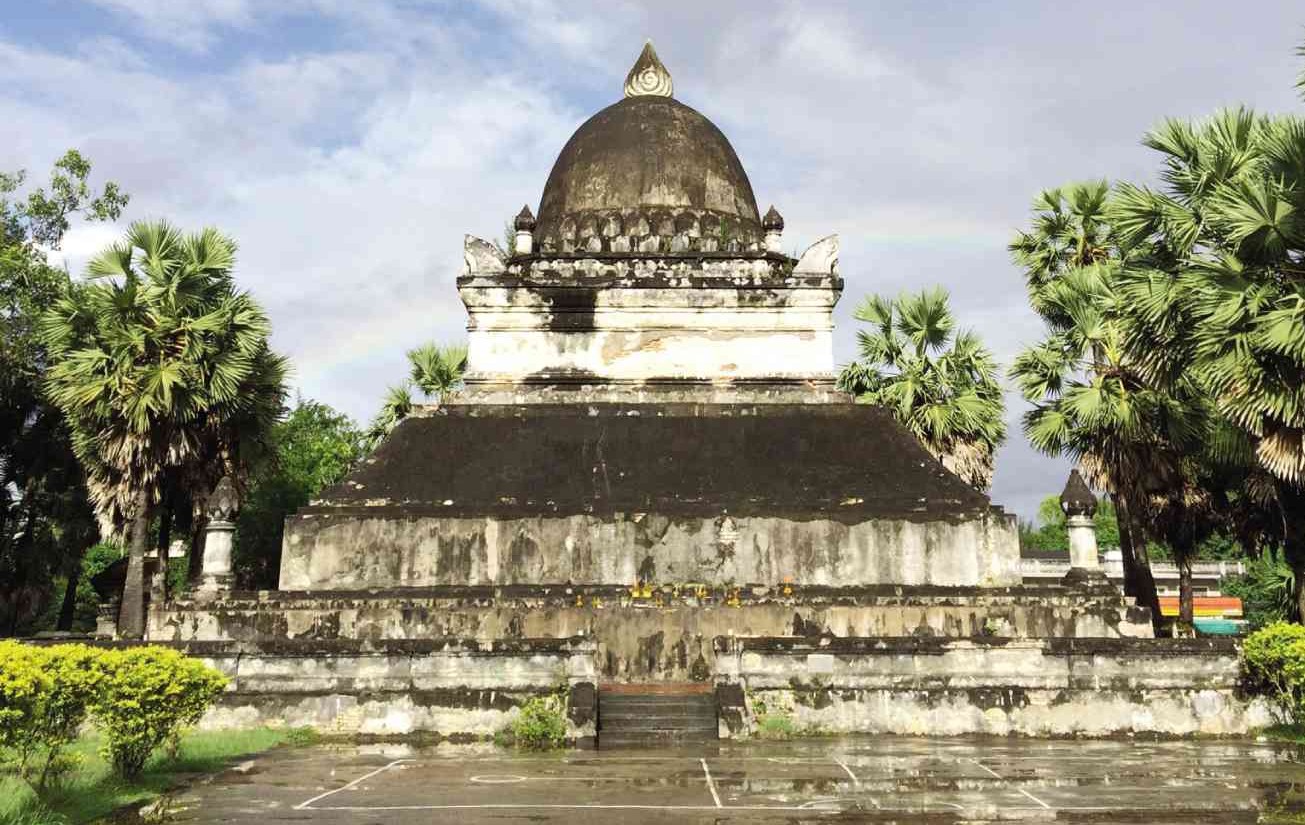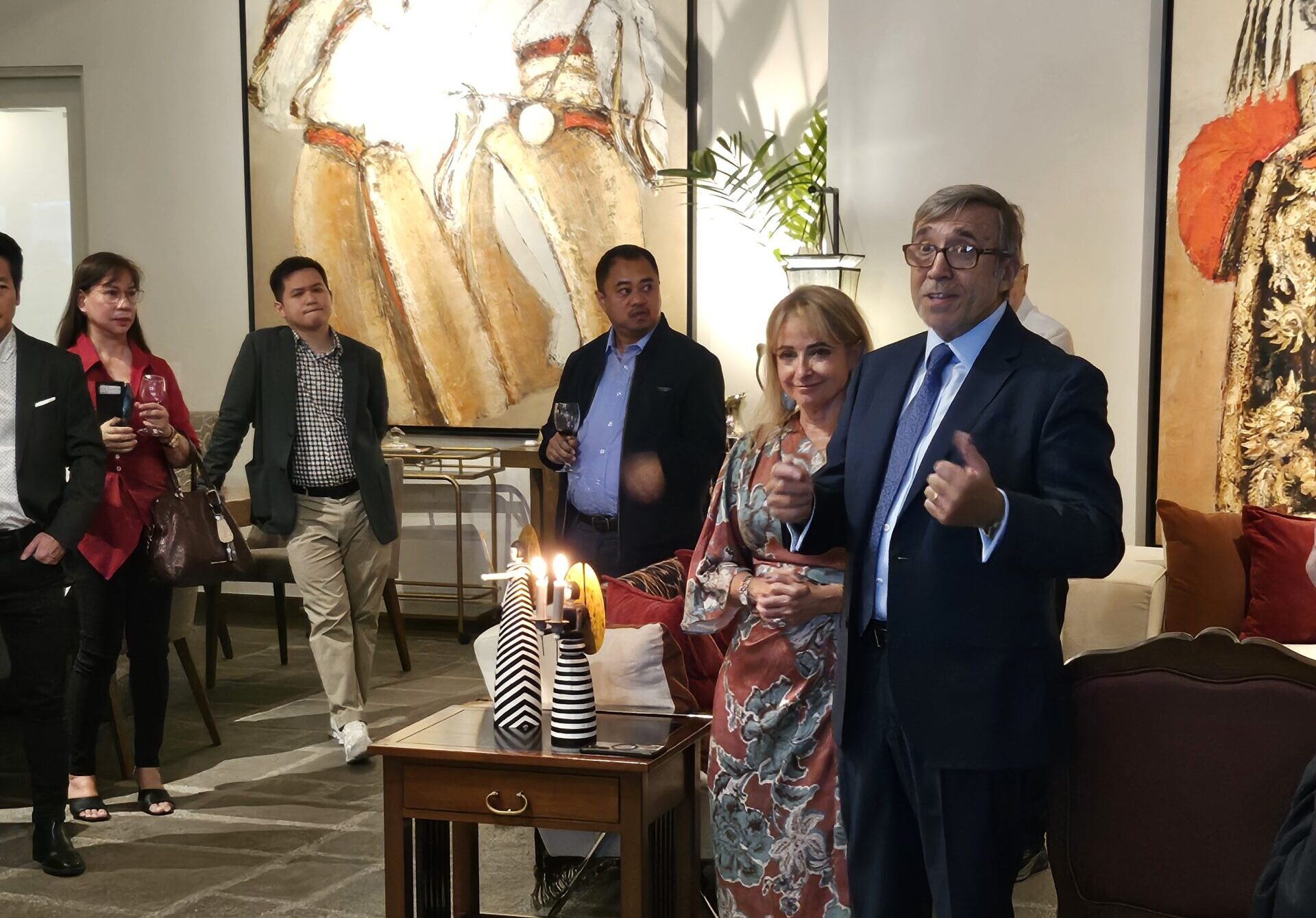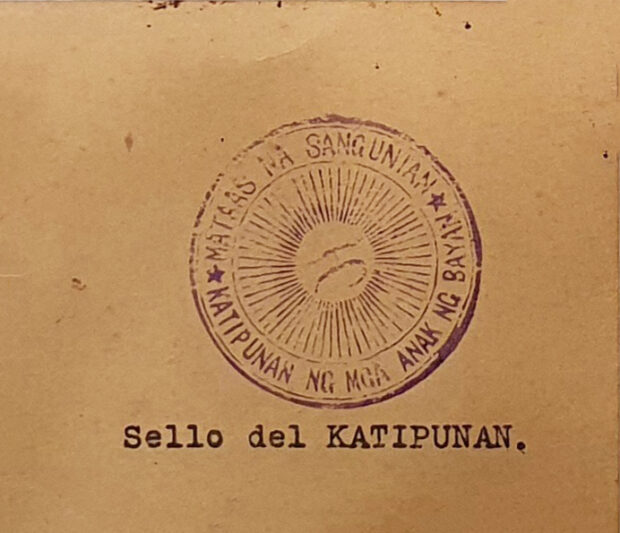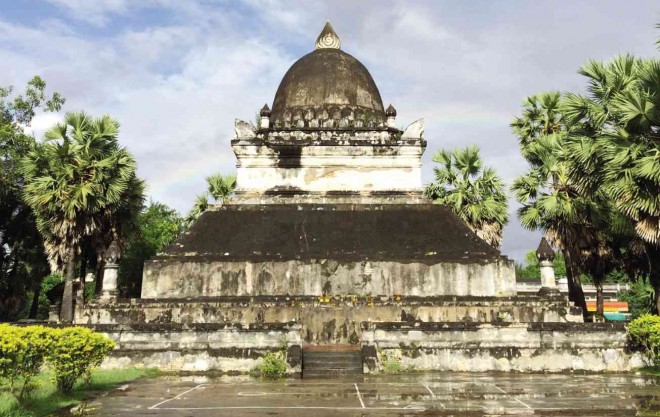
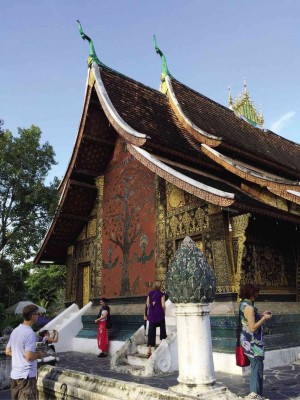
MANILA, Philippines—We were about to board a traditional Laotian slow boat—a long and narrow wooden boat with steel hulls and squared-off decks painted red and blue.
If the patchwork of colors was meant to ease our anxiety of hopping into an odd-shaped vessel, then it somehow succeeded. While our boat was not exactly “slow,” it was not fast as the other ones.
We were cruising upstream toward the Pak Ou caves, against the current, on the mighty Mekong River, which is now copper-brown with silt after weeks of sporadic rainfall.
Legend has it that the town of Luang Prabang in Laos (pronounced Lao, with a silent “s”), was where Buddha chose to rest for a full day during a journey. The place so charmed the “enlightened one” that it made him break into a smile.
Today, however, we were headed 25 kilometers away from Luang Prabang, to the Pak Ou caves—where, according to our guide, old Buddha icons are brought to “die.”
Cut into the majestic limestone cliffs are two caves, Tham Ting and Tham Theung, collectively called the Pak Ou caves, a repository of more than 4,000 Buddha icons venerated by pilgrims.
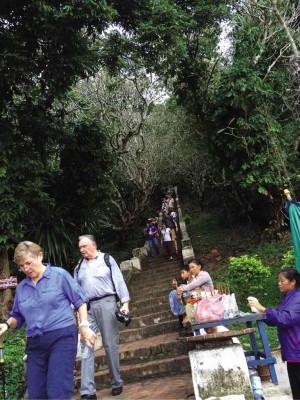
The statues, mostly made of wood in varying sizes, have been donated by generations of Laotians. These are old, discarded (sometimes broken) Buddha icons brought here to their final resting place—the Pak Ou caves being shrines to the river spirit and Lord Buddha.
250 steps
The first cave is visible from the river, a mere minute or two above the docks.
But the second cave (Tham Theung) is 50 meters above the river. It was not a rough climb, though. A stairway consisting of 250 steps had been constructed around the hill.
But 250 steps were still a lot, and for one whose “training” is climbing three floors up a winding staircase to the editorial office of the Inquirer, we were huffing, puffing, panting and sweating like mad upon reaching the top.
At the mouth of the cave was a booth where visitors were encouraged to make a donation. The amount covered the use of flashlights, sometimes even torches, to navigate the cave, since it is so deep that natural light cannot penetrate into its caverns.
It might have been quite a spooky walk into the cold, pitch-black cave, if it weren’t for the modest crowd of tourists exploring it with us. Buddha images flickered before our eyes, becoming visible only when light was beamed on them.
The Pak Ou caves adventure was Day 2 in our Luang Prabang itinerary.
Praying to the gods
On the first day, our small group of journalists from Manila and Singapore was whisked straight from the airport to visit important Laotian temples, before culminating the day with a 328-step climb up Mount Phousi to witness the town’s fabled sunset.
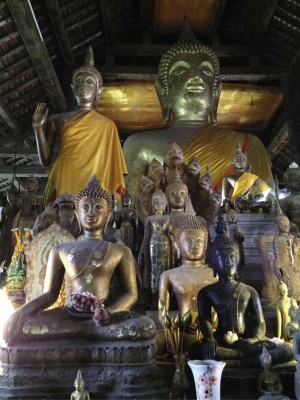
It was drizzling. Fearing a downpour was imminent, our Laotian guides thought it best to go around the sights first and then check in our hotel by nightfall, preferably after dinner.
“The sunset is best seen from the Phousi mountain,” our Laotian guide gleefully announced.
Unlike some people in the group, we were not particularly concerned about the difficulty of climbing 328 steps; what worried us was our pony-hair slip-on sneakers. We were not properly shod to scale a mountain with muddy, uneven, slippery steps. A backpack containing important gadgets added to our distress.
Just before the climb, we chugged on a small can of regular Pepsi, and prayed to the gods that it would be enough to spike our energy till we reach the top and back down with our shoes still intact.
It turned out to be a scenic climb up Mount Phousi, a pleasant experience if you’re good at negotiating steps. The stairs wound up the mountain, revealing stunning golden Buddha statues in varying mudras on some bends and turns. There was a Buddha praying for rain and another one holding alms bowls.

The steps might not be wide enough to sit on without causing the line of people behind to stop, but there were many resting places along the way.
Two routes
There are two routes to reach Mount Phousi—via the 328 steps that start from Sisavangvong Road, and the 355 steps from Thanon Phousi. To experience the views and see many of the shrines that dot the way, it’s best to take both: one for going up, the other for going down.
On the summit is Wat Chomsi, a gilded stupa resting on a three-tiered base built in 1804. Below is a breathtaking 360-degree view of Luang Prabang, a town fenced by verdant mountains with virgin jungles, and flanked on one side by the Mekong River and the other by the Nam Khan River.
A trip to Luang Prabang, it turned out, required physical and mental strength. After a tour of the Pak Ou caves the following morning, we were taken to another uphill trek in the afternoon to see the famous Tad Kuang Si Falls—the largest in Luang Prabang, located 30 km from the town center.
It was a leisurely walk up on an asphalt street. No cars were allowed, but buses with elderly passengers were granted access inside the park.
The cool, blue waters of Tad Kuang Si dropped from 200 feet, clashing violently into rocks and boulders below, streaming toward its numerous pools until its speed slowed down, and its silky waters meandered through the valleys below.
Tourists were allowed to swim in the pools. We could have done so, especially after enduring many climbs, but we soon had to rush back to town for our baci ceremony and dinner.
Baci is a traditional Lao ceremony, in which Laotian elders tie strings around each wrist to usher in blessings and good luck. The strings are first knotted and then tied to the wrist to ensure that the soul never goes astray. It’s a ritual used to mark important events in one’s life, such as birthdays, weddings, sendoffs and homecomings.
Our guide said we can make specific wishes, and that the strings are not to be removed until after three days and three nights. The more traditional Laotian, however, won’t remove the strings and will wait for them to naturally fall off.
1,000 monks
Not to be missed in the itinerary is tak bat, or the alms-giving ceremony. Every morning at 6, an estimated 1,000 monks emerged from the town’s 30 temples, lighting up the streets with their bright saffron robes.
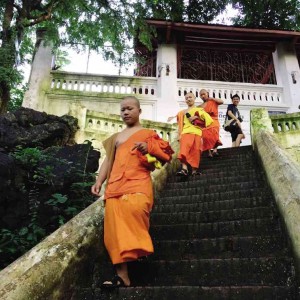
They would walk barefoot on the pavements of Luang Prabang, crossing streets lined with lovely mélanges of traditional Laotian timber houses and old French villas.
Each monk carried an alms basket, while locals (and tourists) kneeling on the streets (their heads should not rise higher than the monks’ as a sign of respect) offered sticky rice, snacks and sometimes money. These offerings served as the monks’ food for the day.
This is the most revered of all Laotian traditions. It is believed that by offering food or money to the monks, Laotians stand to gain good karma.
It’s a sacred ceremony that has recently become controversial because of the tourists’ intrusive cameras and utter disregard for rules. One is advised to be mindful of movements and to maintain respectable distance when not participating.
This is not the right occasion to take selfies. Talk to the guide about proper dress code and behavior while in the presence of a monk.
The European Council on Tourism and Trade has named Laos the “world’s best tourist destination” for 2013.
And since Luang Prabang opened its doors to the world, after the entire town was inscribed in the Unesco World Heritage List in 1995, tourists have been flooding its streets.
It was once a French colony (1893-1946), so there’s a good chance of finding baguettes in one of its quaint bakeries. It also has a night market offering a variety of trinkets, souvenirs and other items at a bargain.
After shopping, Lao Beer, a light lager, makes for a good nightcap.
The Manila and Singapore group of journalists was flown in to Luang Prabang, Laos, courtesy of Thai Airways and the Tourism Authority of Thailand.
Thai Airways now flies to Luang Prabang four times a week (Tuesday, Friday, Saturday and Sunday). For ticketing until Dec. 15, round-trip airfare (Manila-Bangkok-Luang Prabang-Bangkok-Manila) on Economy Class starts at $285, excluding taxes, for travel periods from Jan. 1 to March 31, 2015. Log on: thaiairways.com.

